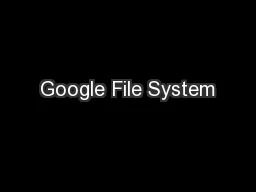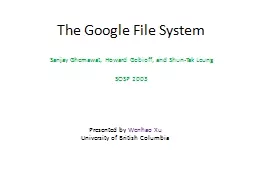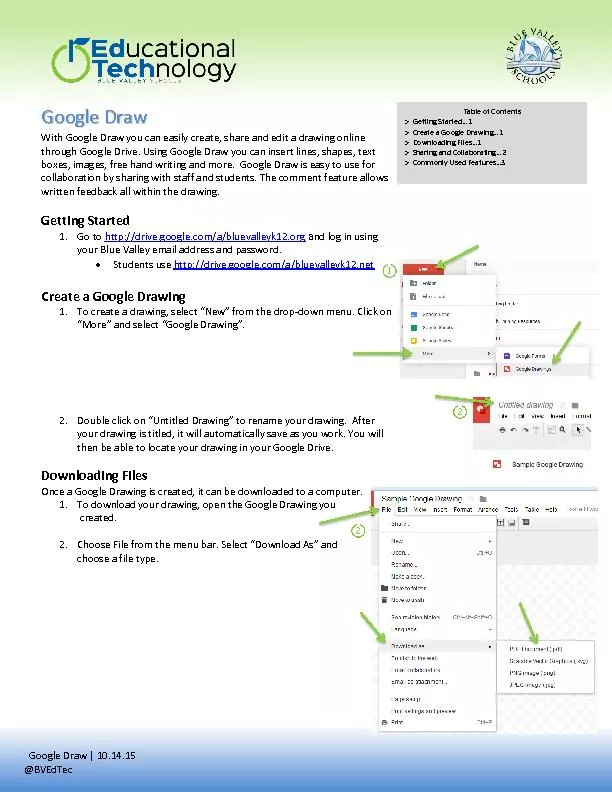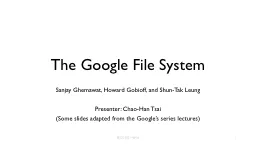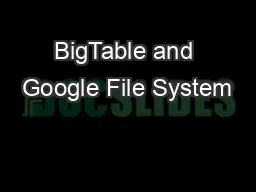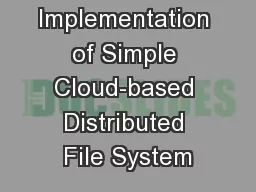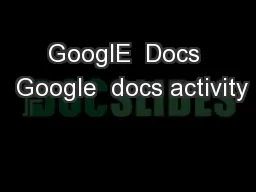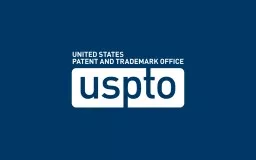PPT-Google File System
Author : liane-varnes | Published Date : 2015-10-19
CS 5204 Operating Systems 2 Google Disk Farm Early days 1999 Google Disk Farm Dennis Kafura CS5204 Operating Systems 3 today CS 5204 Operating Systems 4 Design
Presentation Embed Code
Download Presentation
Download Presentation The PPT/PDF document "Google File System" is the property of its rightful owner. Permission is granted to download and print the materials on this website for personal, non-commercial use only, and to display it on your personal computer provided you do not modify the materials and that you retain all copyright notices contained in the materials. By downloading content from our website, you accept the terms of this agreement.
Google File System: Transcript
Download Rules Of Document
"Google File System"The content belongs to its owner. You may download and print it for personal use, without modification, and keep all copyright notices. By downloading, you agree to these terms.
Related Documents

